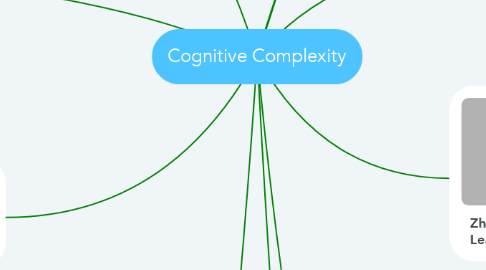Cognitive Complexity
by mattimusprime74 mnjwyman

1. The Create Excellence Framework builds upon and revise Bloom's taxonomy to create a hierarchy of skills and thinking levels that students practice.
2. Create Excellence Framework
3. How It All Fits Together
3.1. These concepts are similar to the Create Excellence Framework in that they both tout the benefits of using technology with fidelity in modern education.(Maxwell, 2017)
3.1.1. Both viewpoints also advocate a shift from the typical industrial model of core subjects (Math, Science, Social Studies, Language Arts/Reading) to a model of blended learning that fosters critical thinking.
3.2. There are some areas where the authors deviate from Prensky’s viewpoints. Zhao puts a much higher emphasis on entrepreneurship and artistry, explicitly making them two of the main focus areas of his model.
3.3. The rise of technology and its universal access is truly is a new frontier in our world. Technology is advancing at a pace that is dizzying for educators, employers, and “digital immigrants”. In a way, we have to catch up with our children. While a lot of this is new for educators, this is merely the world to our students and learners. In order to keep up with our changing world, our ideas of education and what skills are important must change with it.
4. In Education, technology has become the elephant in the room any time that best practices, policy, and reform strategies are mentioned. It has permeated every facet of our lives. Never before has a generation been born into the amount of technology and information that is available today. While this is exciting and presents endless possibility for the future, it also forces educators to reassess the way that students learn and explore the world around them. This new frontier has led, in some instances, to push back and even calls for less technology access from those who are unsure of how to proceed in this brave, new world. There are several voices that are coming forward to offer ways that technology can be utilized to compliment and extend cognitive processes.
5. Reading the Wind
6. Prensky's Concept of Brain Gain
6.1. The concept of Brain Gain suggests that “digital natives” use technology as an extension of their own brain.(Prensky, 2004)
6.2. Prensky describes the phenomenon of “digital natives”. Children that have grown up immersed in technology cannot comprehend the concept of a world without it because they have never known any other world. Anyone who grew up before this age of technology is considered a “digital immigrant” or someone who has had to adapt to living in the technological age while holding onto the remnants of life before technology was so pervasive in everyday life.
7. Zhao's Concept of World Class Learners
7.1. Zhao coins his approach “World Class Learners”.(Zhao, 2014) He describes how technology plays a role in shaping a new paradigm shift in education. He proposes a transition from classic subject based education to an individualized format that emphasizes areas such as creativity, entrepreneurship, and artistry,
7.2. He espouses technology and how it can bolster all of these areas and allow learners to prepare themselves for the world of today and tomorrow.
8. In Education, technology has become the elephant in the room any time that best practices, policy, and reform strategies are mentioned. It has permeated every facet of our lives. Never before has a generation been born into the amount of technology and information that is available today. While this is exciting and presents endless possibility for the future, it also forces educators to reassess the way that students learn and explore the world around them. This new frontier has led, in some instances, to push back and even calls for less technology access from those who are unsure of how to proceed in this brave, new world. There are several voices that are coming forward to offer ways that technology can be utilized to compliment and extend cognitive processes.
9. Created by Marge Maxwell
10. this is my text



